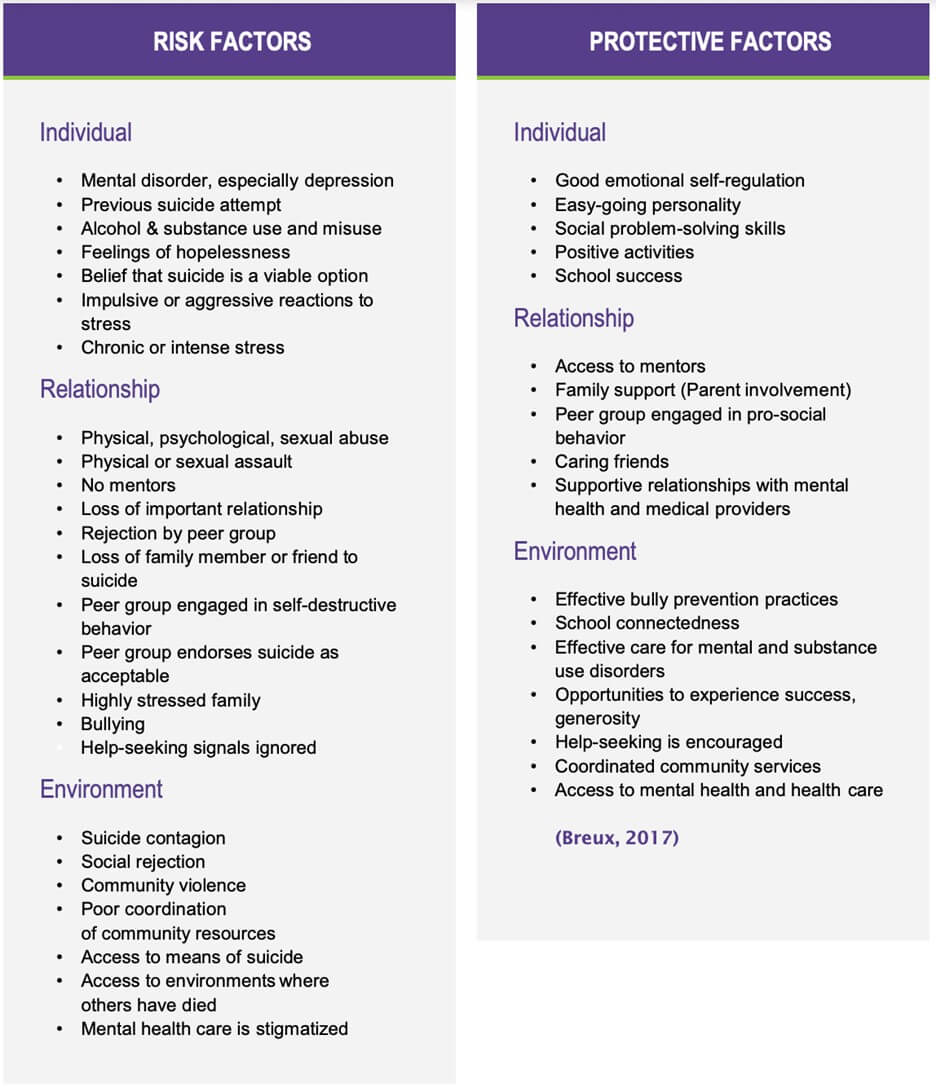A nurse is providing a community health education class about suicide prevention. Which of the following should the nurse identify as risk factors for suicide? (Select all that apply).
Female gender
Currently married
Age greater than 45 years old
Substance use disorder
Schizophrenia: Correct
Correct Answer : C,D,E
A. Female gender: Incorrect
While the risk of attempted suicide is generally higher in females, completed suicide rates are higher in males. Therefore, being female is not typically considered a primary risk factor for suicide, though it's important to note that both genders require attention for prevention.
B. Currently married: Incorrect
Being married is generally considered a protective factor against suicide. Social support and close relationships tend to reduce the risk of suicidal behavior.
C. Age greater than 45 years old: correct
Suicide risk tends to increase with age, particularly for men. Individuals over 45, especially those facing chronic illness, social isolation, or significant life changes, are at higher risk.
D. Substance use disorder: Correct
Substance use disorder is a significant risk factor for suicide. Substance abuse can contribute to feelings of hopelessness and despair, impair judgment, and lower inhibitions, increasing the likelihood of suicidal behavior.
E. Schizophrenia: Correct
Schizophrenia is a mental disorder associated with an increased risk of suicide. The symptoms of schizophrenia, such as hallucinations, delusions, and feelings of isolation, can contribute to severe distress and increase the risk of suicidal ideation and behaviors.

Nursing Test Bank
Naxlex Comprehensive Predictor Exams
Related Questions
Correct Answer is D
Explanation
A. Discuss self-defense techniques with the client: Incorrect
While self-defense techniques can be useful information, discussing them immediately after a traumatic event like sexual assault may not be appropriate. The client's immediate needs for emotional support, medical evaluation, and safety are more pressing.
B. Give the client a bed bath prior to physical examination: Incorrect
In cases of sexual assault, preserving evidence is important for legal purposes and for the client's well-being. Providing a bed bath could potentially compromise evidence and hinder a thorough examination by healthcare professionals.
C. Inform the client photographs of injuries are required for a police report: Correct
Preserving evidence is crucial in cases of sexual assault, especially if the client intends to involve law enforcement. Informing the client about the importance of photographs for a police report is appropriate and can contribute to a potential legal investigation.
D. Ask the client to describe the situation: Correct
It's important to encourage the client to share their experience, but it should be done in a sensitive and supportive manner. Gathering information about the situation can help the healthcare team understand the scope of the assault, provide appropriate medical care, and offer necessary emotional support.
Correct Answer is C
Explanation
Encouraging client feedback about their satisfaction with the facility experience is related to communication and patient-centered care, but it's not directly addressing the client's autonomy in making decisions about their own care or treatment.
B) Explaining unit rules and policies regarding unacceptable behaviors:
Explaining unit rules and policies is important for maintaining a safe and therapeutic environment, but it's more about providing information and setting expectations rather than addressing the client's autonomy.
C) Supporting the client's wish to refuse prescribed medications.
Explanation:
Autonomy is the ethical principle that emphasizes an individual's right to make decisions about their own care and treatment. In the context of healthcare, respecting autonomy means that healthcare professionals should honor a patient's decisions as long as they are informed and capable of making those decisions. By supporting the client's wish to refuse prescribed medications, the nurse is respecting the client's autonomy and allowing them to have control over their own treatment decisions.
D) Making sure the client understands expectations for client participation:
Ensuring that the client understands expectations for participation is important for collaboration in their care, but it's not directly related to the client's autonomous decision-making about their treatment.
Whether you are a student looking to ace your exams or a practicing nurse seeking to enhance your expertise , our nursing education contents will empower you with the confidence and competence to make a difference in the lives of patients and become a respected leader in the healthcare field.
Visit Naxlex, invest in your future and unlock endless possibilities with our unparalleled nursing education contents today
Report Wrong Answer on the Current Question
Do you disagree with the answer? If yes, what is your expected answer? Explain.
Kindly be descriptive with the issue you are facing.
